CarEdge saved me over 4,500 dollars on a brand new Honda Pilot. I can't say thank you enough.
Price intelligence
Find a wide range of vehicle listings with market insights on new and used listings near you.
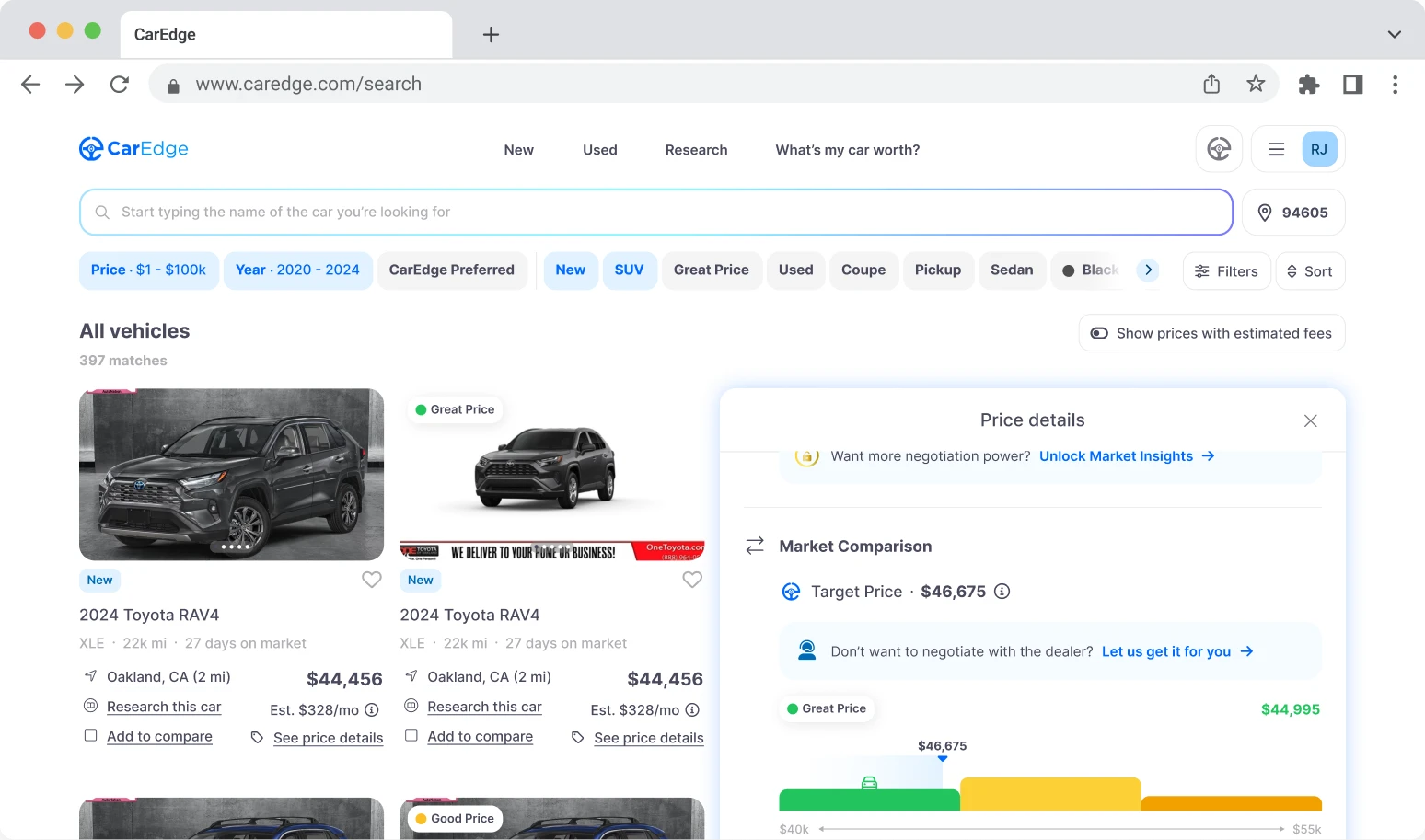

Help us personalize your CarEdge experience — it only takes a second.
Your answers help us personalize your CarEdge journey — we’ll follow up with tips and next steps that match your buying timeline.

After surpassing 2008’s record on Monday, gas prices will continue to rise for the foreseeable future. On June 14, the national average reached $5.02 per gallon. The record prices hit some drivers harder than others. With energy experts predicting instability for months to come, what’s on the horizon for auto sales in the United States?
| $4.17/gallon | $4.50/gallon | $5.00/gallon | |
| Ford F-150 (20 mpg) | $108 | $117 | $130 |
| Ram 1500 (22 mpg) | $108 | $117 | $130 |
| Chevrolet Silverado (20 mpg) | $100 | $108 | $120 |
| Toyota RAV4 (30 mpg) | $60 | $65 | $73 |
| Honda CR-V (30 mpg) | $58 | $63 | $70 |
| Toyota Camry (32 mpg) | $67 | $72 | $80 |
| Nissan Rogue (30 mpg) | $60 | $65 | $73 |
| Jeep Grand Cherokee (21 mpg) | $104 | $113 | $125 |
| Toyota Highlander (23 mpg) | $75 | $81 | $90 |
| Honda Civic (34 mpg) | $52 | $56 | $62 |
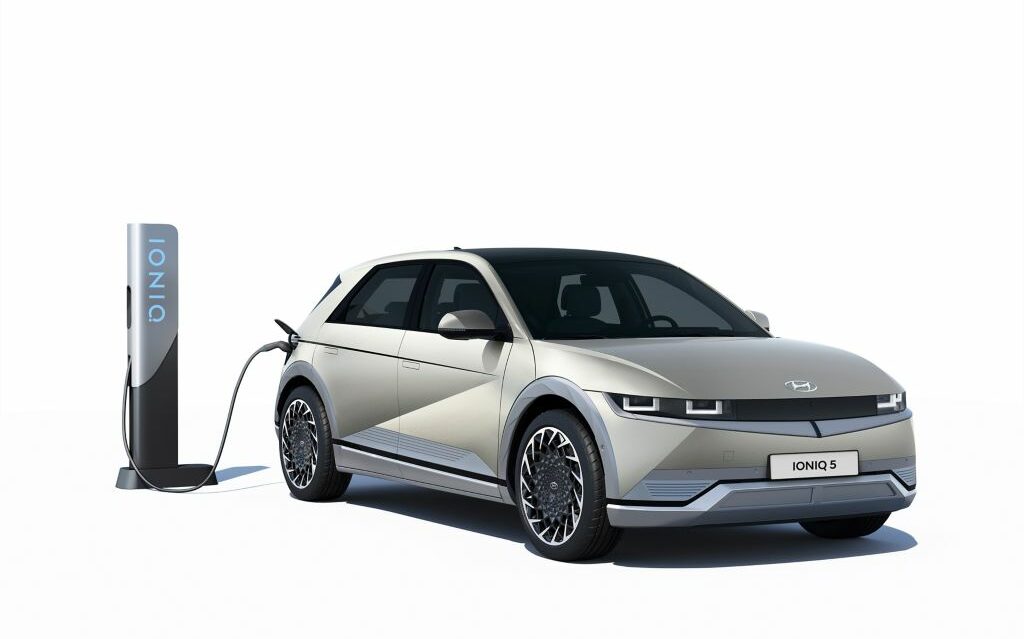
At over $5.00/gallon, a larger portion of consumers are likely to turn to electric vehicles to solve their fuel cost woes. Last time gas prices were at record highs, there were no mainstream EVs for sale. In fact, Tesla’s original Roadster (which sold only 2,450 cars) made its debut in 2008. Although charging infrastructure lags behind sales growth, more and more drivers are making the switch.
In 2021, fully-electric and plug-in hybrid models reached 4.8% market share in the United States. It’s fascinating to imagine what would be possible in 2022 if new vehicle inventory was at historically normal levels.
Here’s how much an EV owner driving 1,200 miles a month and charging at home would spend on fuel (electricity). Miles driven and residential electricity rates reflect the US averages.
| Battery (kWh) | Range (miles) | Cost per charge ($) | |
| Tesla Model 3 LR | 82 | 358 | $11.48 |
| Tesla Model Y Dual Motor | 75 | 330 | $10.50 |
| Volkswagen ID.4 | 82 | 260 | $11.48 |
| Hyundai IONIQ 5 | 77 | 303 | $10.78 |
| Ford Mustang Mach-E | 91 | 305 | $12.74 |
| Rivian R1T | 135 | 314 | $18.90 |
Breaking down the fuel cost per mile highlights potential savings even further:
| Range | Fuel Cost ($) | Cost Per Mile ($) | |
| Tesla Model 3 LR | 358 | 11.48 | 0.03 |
| Tesla Model Y Dual Motor | 330 | 10.50 | 0.03 |
| Volkswagen ID.4 | 260 | 11.48 | 0.04 |
| Hyundai IONIQ 5 | 303 | 10.78 | 0.04 |
| Ford Mustang Mach-E | 305 | 12.74 | 0.04 |
| Rivian R1T | 314 | 18.90 | 0.06 |
| Honda CR-V | 420 | 63.00 | 0.15 |
| Toyota RAV4 | 435 | 65.25 | 0.15 |
| Chevrolet Silverado | 480 | 108.00 | 0.23 |
| Ram 1500 | 572 | 117.00 | 0.20 |
| Ford F-150 | 520 | 117.00 | 0.23 |
This comparison includes gas at $4.50/gal and electricity at the average of $0.14/kWh.
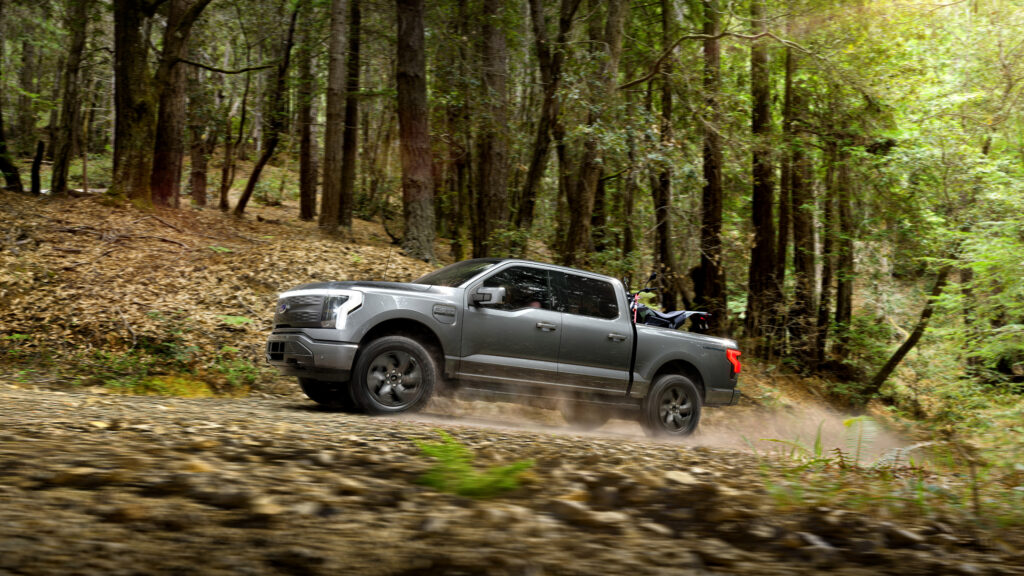
Some headlines don’t age well. In 2008, Wired made a bold statement that is laughable in hindsight. “Rising Gas Prices Finally Kill The Once-Mighty SUV,” the title declared. 2008 saw gas prices climb to $4.10 a gallon, a record that stood until yesterday.
In 2008, sales of the Toyota Yaris increased 46%, and the Ford Focus model jumped 32% year-over-year. “It’s easily the most dramatic segment shift I have witnessed in the market in my 31 years here,” George Pipas, chief sales analyst for the Ford Motor Company told the New York Times that year.
Sales of SUVs were down more than 25% in 2008. Sales of the Chevrolet Tahoe fell 35%. Even the industry-leading Ford F-Series saw sales drop 27% month-to-month in mid-2008.
“The era of large SUVs is over,” said Michael Jackson, chief executive of AutoNation, the nation’s largest auto retailer.
As history would have it, gas prices declined back to $2.79/gallon in 2010. Truck and SUV sales climbed back to record levels by 2015. What could be different this time around? There were no attractive alternatives to combustion vehicles a decade ago. Hybrid cars remained compact, weird-looking appliances. Now, plenty of electric vehicles are hitting the market with good looks, and even better fuel savings.
The ongoing chip crisis and looming materials crisis due to the Ukraine conflict continues to bottleneck EV production, but dealers (and Tesla, Lucid and Rivian) are selling their EVs as fast as they can make them. Electric vehicle market share is likely to surpass the 5% mark in the first half of 2022. Will higher gas prices accelerate the adoption of EVs? The answer largely depends on supply. Dozens of EVs are technically available in 2022, but are they really if you have to wait months to take delivery? One-third of American drivers say they are seriously considering one for their next vehicle. The question is, will there be any to buy?
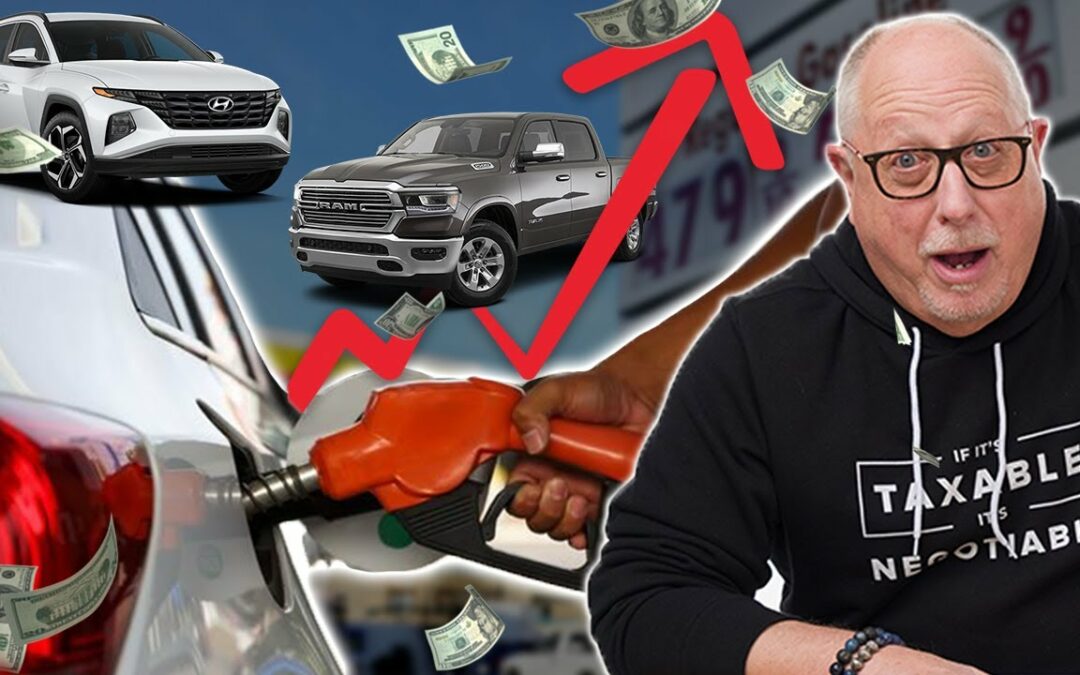
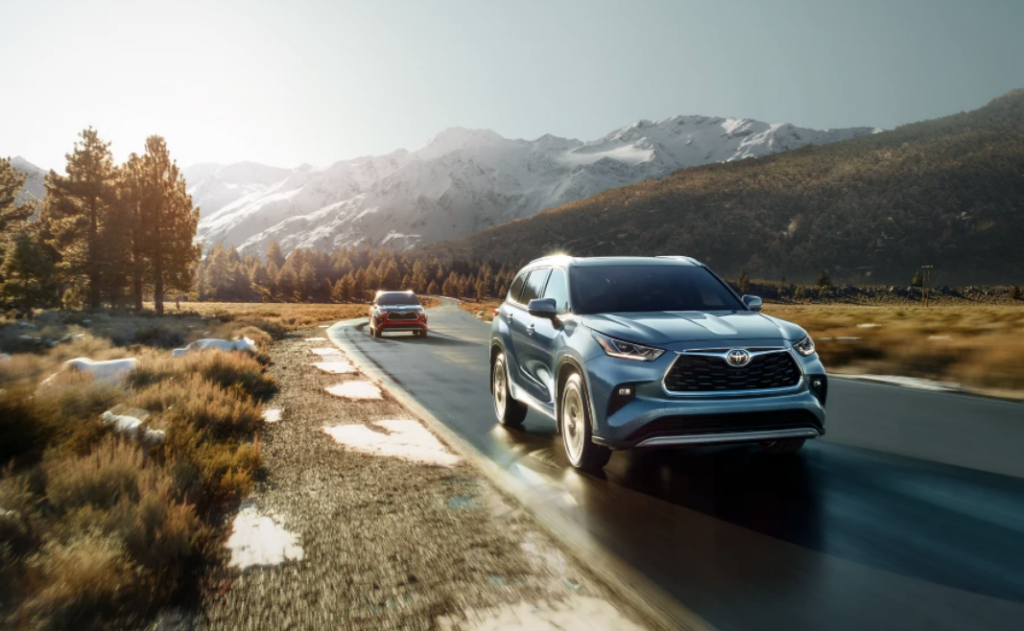
According to data from GasBuddy, the national average cost of one gallon of gasoline surpassed the 2008 record on Monday, March 7, 2022. The average price per gallon now stands at $4.10. AAA’s average is now $4.07, however several states are already over $4.50. How high will gas prices go, and what will it take to bring prices back down?
Energy experts predict gasoline prices to reach $4.50 at a minimum, with $5.00 not out of the question nationally. In California, the price of a gallon of gas is already $5.34. GasBuddy Head of Petroleum Analysis Patrick De Haan shared his predictions given the current state of affairs. “Most of the areas east of the Rockies are at low risk for some of the apocalyptic numbers like $5 and $6 per gallon…This is something that could change very quickly, but I don’t see that in most areas of the country just yet.”
Diesel prices average $4.63 per gallon, but are headed for $5.00 per gallon. GasBuddy petroleum analysts expect the record of $4.84 to be broken within two weeks.
Energy analysts point to the Russian invasion of Ukraine as the overwhelming cause of spiking prices. Russia is responsible for about 7% of global oil supply. Talk of cutting off Russian oil exports to Europe and America is raising oil prices to $130 per barrel on fears of further instability. In 2008, the price per barrel of oil hit a record $147. That record may be within reach, especially as warmer weather brings higher demand for fuel.
Analysts say that prices will rise and remain elevated until global instability calms and subsides. In other words, once Russia’s invasion of Ukraine ends. However, we’re entering spring, and warmer weather historically heralds higher gas prices. On average, gas prices in America rise about fifty cents per gallon in March and April.
On Monday, anonymous sources familiar with ongoing discussions told Reuters that the United States is seriously considering a ban on Russian oil imports as yet another sanction. The move has bipartisan support from lawmakers. In a Monday meeting, US officials tried to get European nations to join the Russian oil ban, but apparently none of them were willing to make the move.
The U.S. only gets about 3.5% of its oil from Russia, so Rabobank energy analyst Ryan Fitzmaurice told CNN that a U.S. ban would have symbolic significance. However, the European Union relies on Russia for over one quarter of its crude oil. A ban in the EU would have far greater effects. In Germany, gasoline sold for an average of $7.72 USD per gallon ($2.04 per liter) at the end of February. Shutting off Russian pipelines would send prices even higher.
A lot can change in two years. Back in April of 2020, quarantine shutdowns sent gas prices sinking to an average of $1.74 nationally. Many of us saw gas for under one dollar per gallon. Who knows where prices will be two years into the future.
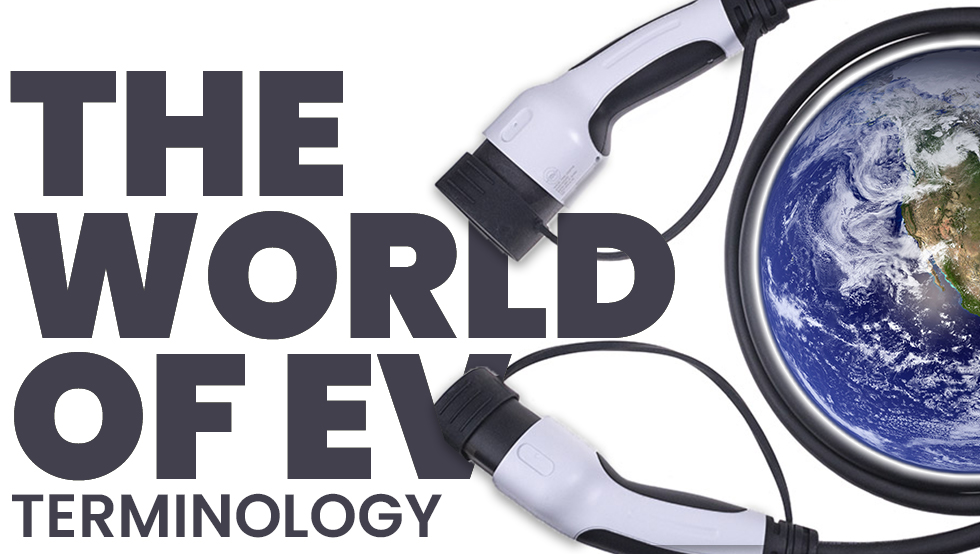
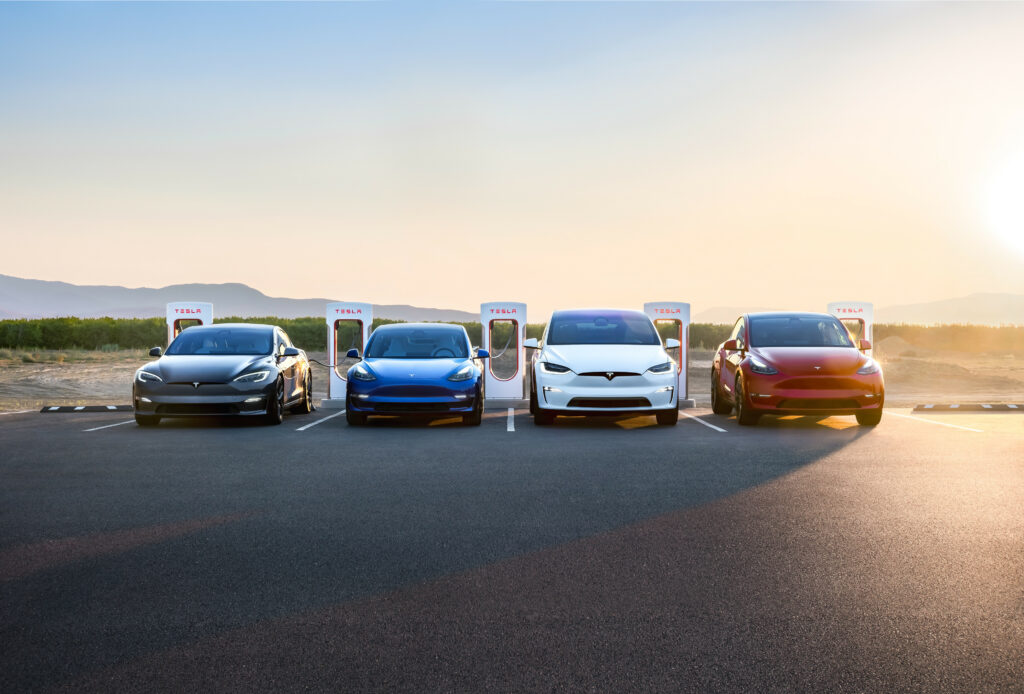
DC chargers, EVSEs, kilowatts and kilowatt-hours, a whole dictionary of new words, units and ownership experiences awaits first-time electric vehicle adopters. There’s a real learning curve that comes along with owning and operating an electric vehicle. Even if you plan to get every last mile out of your favorite combustion engine, the electric floodgates are open, and every automaker is making the switch.
There’s a lot to cover. You could read this valuable resource like a book, or better yet make use of the table of contents to skip around. These are the electric car terms you’ll be hearing a lot more of in tomorrow’s auto market. Did we miss any? Let us know!
This is the preferred planner used for road trips in electric vehicles. A Better Route Planner is fully-customizable, making charging stops much easier to plan.
AC stands for alternating current. Electricity supplied by the power grid is AC, yet electric vehicles need direct current (DC) to charge the battery. The “onboard charger” built into the vehicle converts power from AC to DC and then feeds it into the car’s battery. Charging at home will convert AC from the power outlet into DC in the car.
Amperes, or amps, are the base unit of electric current. Current is the speed or rate at which the electrons flow through a conductor, such as copper wire in a charging cable. Charging an EV from a basic level one 110 volt wall outlet provides around 12 amps of electricity current. Stepping up to a level two home charger (240 volt dryer outlet) sends around 32 amps to the car. Level three DC fast chargers supply over 100 amps.
This allows the vehicle to come to remain at a complete stop with the foot off of the brake. Auto hold is an essential part of one-pedal driving.
Some EVs are powered by asynchronous motors, which are cheaper to produce than permanent magnet motors. Most modern electric vehicles are powered by permanent magnet motors due to their higher efficiency and improved power generation.
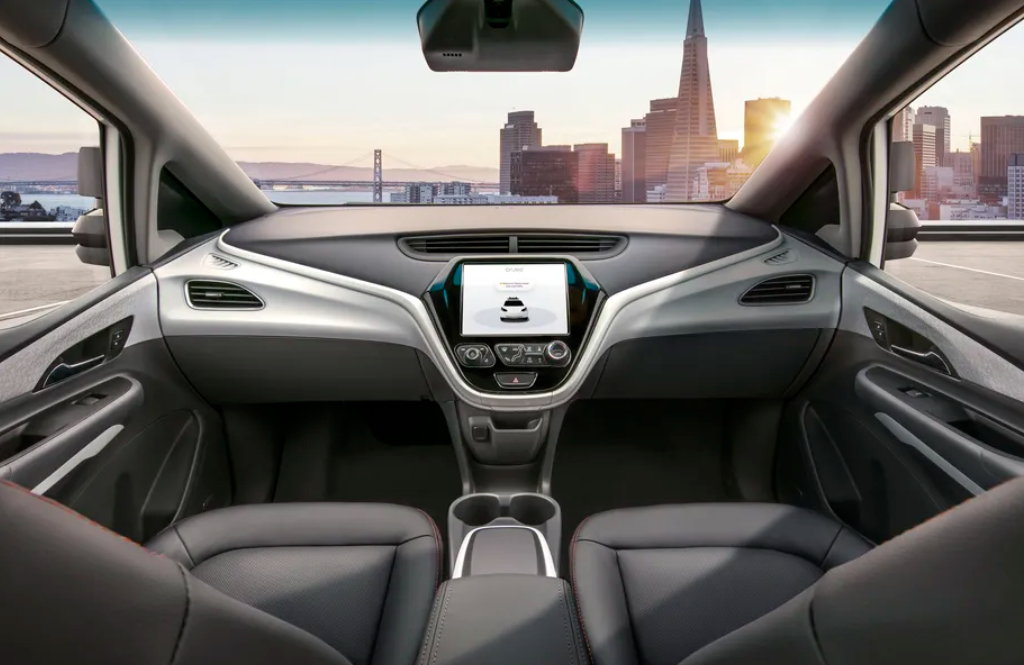
Great news! CarEdge published an entire guide to autonomous vehicles. There are different levels of autonomous driving. The lower levels are basically cruise control and lane centering. Advanced autonomy permits the driver to take hands off of the steering wheel. Fully autonomous cars don’t require the driver to pay attention at all, and can travel anywhere at a moment’s notice.
EV batteries don’t drain all the way to their true 0% state of charge. Doing so often would permanently damage the battery. Instead, all batteries are engineered to have a buffer. For example, a 82 kWh battery may only have 77 kWh of usable battery. The rest is the buffer. Some automakers send over-the-air updates to electric vehicles that can increase driving range by reducing the battery buffer.
You know the AA or AAA batteries in household electronics? Those are battery cells. Modern EV battery packs are made of several modules (sealed encasings) containing thousands of individual battery cells. Different battery form factors are used, depending on the engineering of the battery technology. The form factor is basically the shape and size of the battery cell.
All batteries lose the capacity to hold power over time due to wear and tear. For the time being, it’s an unavoidable characteristic of battery chemistry. However, battery chemists and engineers are always looking for ways to extend battery life and improve durability. Modern EVs are known to retain over 90% of the original battery capacity and range after 100,000 miles. Many Teslas on the road today have gone well over 200,000 miles on the same battery pack.
Think of the BMS as the ’brain’ of the car’s battery. The EV battery management system ensures the optimized and safe operation of the battery, carefully monitoring and adjusting the temperature, power output and charging intake at all times.
An EV battery module is made of several battery cells arranged and secured into a frame so that it becomes one unit. Battery packs contain several battery modules, which contain thousands of individual battery cells. For example, the Tesla Model 3’s 7,920 battery cells are arranged into five battery modules within the battery pack.
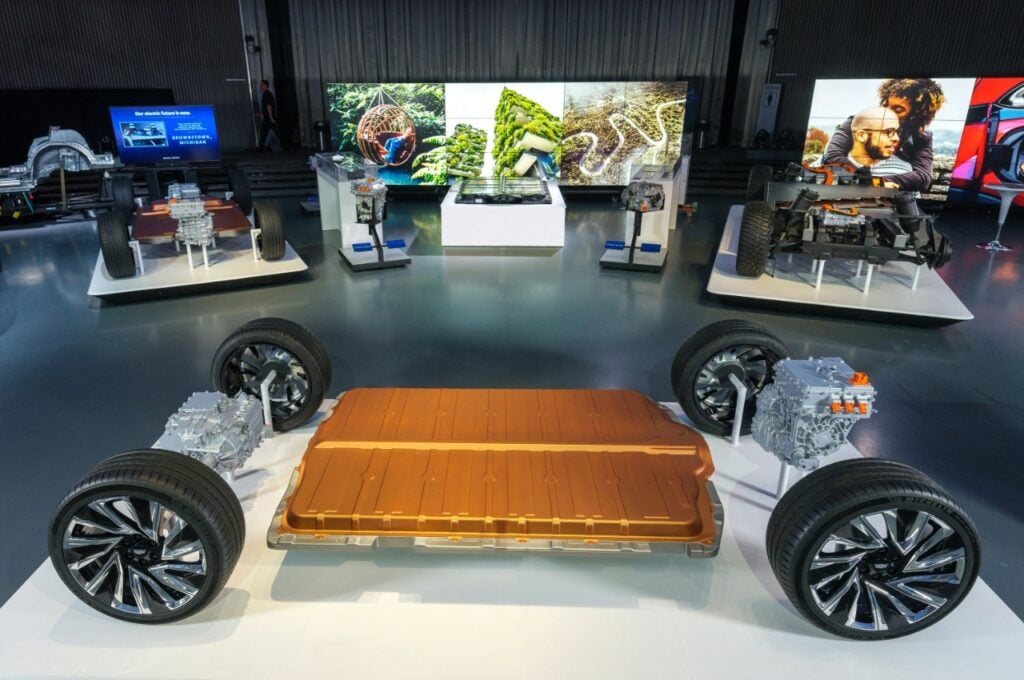
In an electric vehicle, the battery pack contains the individual battery cells and components. In modern EVs, the battery pack lies under the floor of the car, encased in a reinforced, waterproof case that is designed to withstand severe abuse from road debris, off-roading or accidents.
Battery preconditioning prepares an electric vehicle’s battery for fast charging. DC fast chargers supply more power to the battery when the battery is functioning at ideal temperatures. If a battery is still relatively cool, battery preconditioning may automatically warm up the battery to the optimum temperature when the car’s navigation system is navigating to a charger. Preconditioning capability can save drivers time at the charging station.
Some refer to fully-electric vehicles as ‘battery electric vehicles’, or BEVs. The term is used to separate plug-in hybrid vehicles (PHEVs) from fully electric vehicles.
The CCS connector is now the most common charging connector in North America. It’s the closest thing to a ‘standard’. It uses the J1772 charging inlet, and adds two more pins below to make faster charging possible. General Motors (all divisions), Ford, Chrysler, Dodge, Jeep, BMW, Mercedes, Volkswagen, Audi, Porsche, Honda, Kia, Fiat, Hyundai, Volvo, smart, MINI, Jaguar Land Rover, Bentley, Rolls Royce and others use the CCS plug.
Japanese brands continue to use the CHAdeMO connector, despite all other automakers abandoning this charging connector type. In North America, the only manufacturers currently selling electric vehicles that use the CHAdeMO connector are Nissan and Mitsubishi. The Nissan Leaf and the Mitsubishi Outlander plug-in hybrid are the only EVs that use the CHAdeMO charging connector type. Electrify America stations typically have one CHAdeMO plug.

This is where the EV charger is plugged into the car. In some models, the charge port is located where the gas cap is located on traditional cars, but it may be located on the front grille or above the front wheels on some EVs.
ChargePoint is a popular charging station provider. Many ChargePoint stations are located in parking lots at shopping centers.
Adapters make it possible to charge a vehicle with an incompatible charge port. For example, Tesla vehicles all come with a Tesla plug, which is different from the common CCS plug that Volkswagen, Ford, GM and others use. A charging adapter can be purchased and attached to solve this plug mismatch. It’s wise to keep an adapter in the vehicle when traveling.
This is where EV drivers charge up their batteries on road trips, or if they don’t have the ability to charge at home. Charging speeds determine the amount of time drivers spend at a charging station. Older DC fast chargers peaked at 150 kilowatts, but newer charging stations are capable of charging cars at 350 kilowatts. Most charging stations are located in grocery store or gas station parking lots. In the US, a new national charging network is under development to bring charging stations to every corner of America.
DC stands for direct current. A DC charger converts alternating current (AC) from the power grid into direct current inside the charger itself. DC chargers are often called ‘fast chargers’ because this makes it possible to feed much more electricity to the battery much faster. Charging in America is about to get a lot easier.
In electric vehicles, a dual-motor setup enables all-wheel drive. Electric motors are only a tad larger than a basketball, so they can easily be placed on each axle. In fact, high-end EVs often have three motors (tri-motor) or even four motors (quad-motor). Often, dual-motor EVs operate with just the rear motor until additional acceleration or traction is needed.
Most electric vehicles include an eco mode, which activates efficiency measures to reduce battery consumption and prolong driving range.
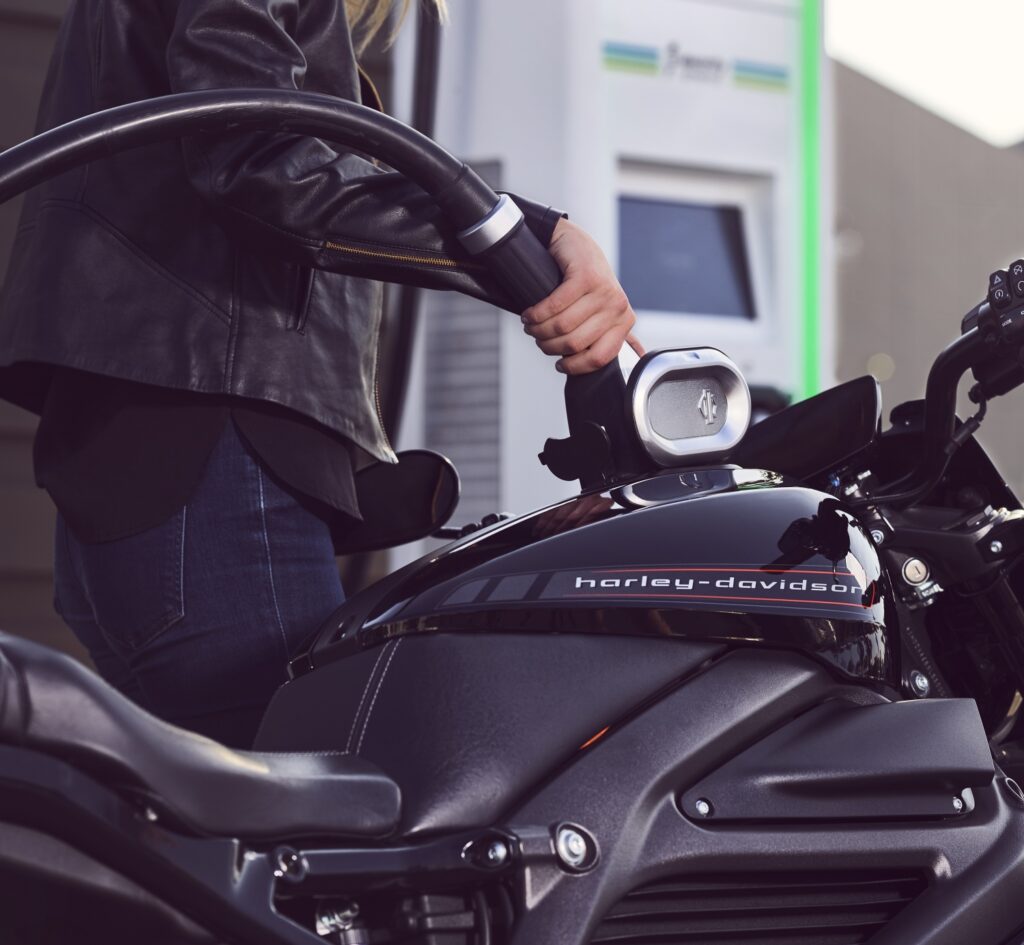
Electrify America is a large and rapidly growing operator of charging stations in the United States. It was established as a result of Volkswagen’s dieselgate emissions scandal. An average of four EA stations were opened every week since the official debut of Electrify America in May of 2018. Now, EA is embarking on the next stage of growth.
The current electric vehicle federal tax credit saves EV buyers $7,500 on their tax bill, so long as they owe at least that much in federal tax liability. In 2022, US lawmakers are considering an expansion to the EV tax credit, possibly up to $12,500 for some models. As of 2022, all automakers except Tesla and GM still qualify for the credit, which phases out after sales surpass 200,000. Learn more here.
Electric Vehicle Supply Equipment (EVSE) supplies charge to the vehicle and controls communication between the car’s battery management system and the charger. EVSE includes the charging cable, connector type, and communication infrastructure between the vehicle and the charger.
What do you call a front trunk? A frunk, of course! Not all EVs have a frunk, but Tesla models are known for their generous frunk sized. Electric trucks have massive frunks.
In the automotive world, ICE stands for internal combustion engine. In other words, old-fashioned, fossil fuel-burning vehicles.
When you pull up to a charging station only to find that it is blocked by an ICE car, you’ve been ICE’d. It’s a real problem when there are no other chargers available, and just annoying in general.
Every electric vehicle sold in North America can use any charging station that comes with the standard J1772 connector. Every non-Tesla level 1 or level 2 charging station sold in North America utilizes the J1772 connector. CCS chargers are a modified version of the J1772 connector.
One kilowatt equals 1,000 Watts. A Watt is a unit used to quantify the rate of energy transfer. Your home microwave uses 1,000 Watts, and an electric motor uses 100 to 300 kilowatts (100,000 to 300,000 Watts). EVs consume a lot of power, so power usage and charging rates are measured in kilowatts. DC fast chargers use 150 to 350 kilowatts.
The kilowatt-hour is a unit of energy equal to one kilowatt of power used or supplied for one hour. The kWh unit is most often used with regards to battery capacity. Modern electric vehicle batteries typically have a capacity between 58 kWh and 125 kWh.
This is the preferred unit of measuring EV efficiency in Europe. In the United States, miles per kilowatt-hour is the most common unit of measuring efficiency.
Level one charging is simply plugging into a standard wall outlet that supplies 110 volts. This is the most affordable charging option, as no installation or accessories are required. However, it is very slow. Often called ‘trickle charge’, level one charging is best for plugging in overnight. It may take 12 to 24 hours to fully charge, depending on the state of charge when plugging in. Here are five common myths about charging at home.
Level two EV chargers use a 240-volt dryer outlet to draw more power, and therefore to charge the car more quickly. Installation of a level two charger costs on average $700 – $1,500, but local, utility and state incentives can reduce the total cost. A level two charger can fill most EV batteries from empty in under 8 hours, adding between 18 and 30 miles of range per hour. Here are five common myths about charging at home.
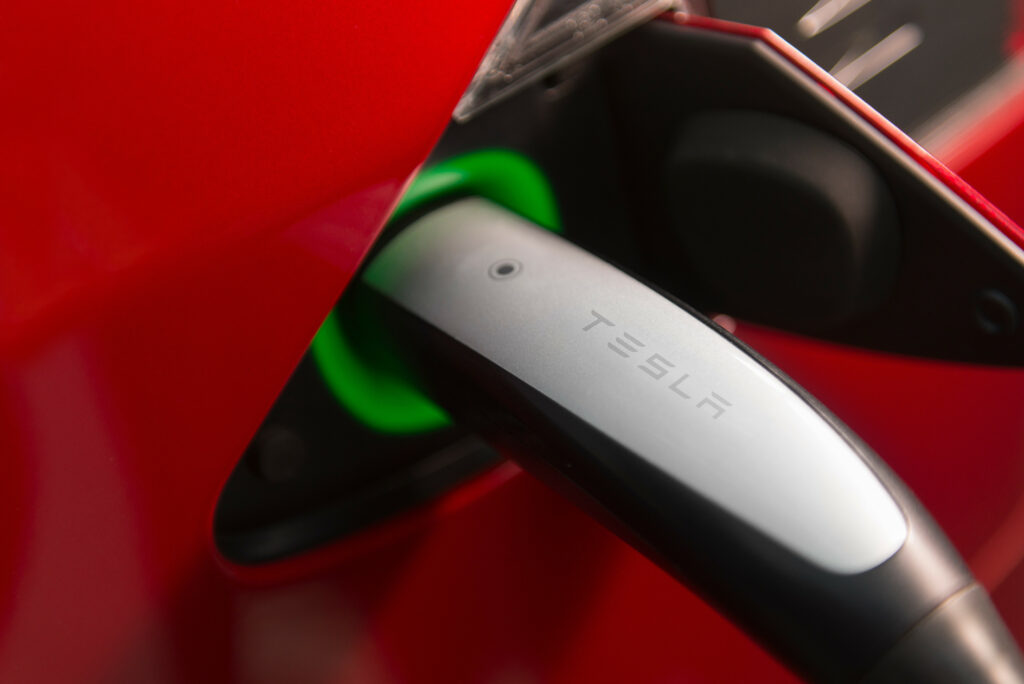
Level 3 chargers are known as DC (direct current) fast chargers. These are the quickest, most powerful chargers. In the United States, Electrify America and Tesla Superchargers are the most widespread level three charging networks. Depending on the vehicle model, a level three charger can fill an electric vehicle battery in 20 to 50 minutes from a low state of charge. Here’s how much it costs to charge at a level 3 charger.
For the time being, all electric vehicle batteries are made of lithium, a rare earth mineral known for high energy density, durability and rechargeability. Other rare minerals and chemicals are also included in the composition of EV batteries, such as nickel, cobalt, iron and phosphate. Lithium is mined from rock deposits.
In the United States, miles per kilowatt-hour is the most common unit of measuring efficiency. It serves the same purpose as ‘miles per gallon’ with combustion vehicles.
Miles per gallon equivalent (MPGe) is one of the units used to characterize the efficiency of an electric vehicle’s battery and electric motor powertrain. One kilowatt-hour (kWh) of electricity contains the same amount of energy as one gallon of gasoline. MPGe is how many miles the electric vehicle can drive on 33.7 kWh of electricity. It is primarily used in the United States. Most electric vehicles get between 90 MPGe and 125 MPGe.
Electric vehicles contain a built-in ‘onboard’ charger that converts AC power from the grid into a DC voltage that is used to charge the battery pack in the vehicle. Level one and level two charging at home is supplied by alternating current (AC) from the grid, however direct current (DC) fast chargers at Electrify America, Tesla Superchargers and others supply direct current directly to the vehicle.
What is one pedal driving? One pedal driving is when an electric vehicle combines regenerative braking and auto hold capabilities to make driving with just the accelerator pedal possible in most situations. With one-pedal driving, the brake pedal is only applied when the need arises to quickly slow down. When ‘creep mode’ is engaged (or the default setting), the car will creep forward when the foot is not on the brake, much as ICE cars do.
With OTA capability, vehicles can receive enhanced performance and safety improvements via a simple wireless internet connection. Some EVs, such as Tesla vehicles, have received OTA updates that actually increase their driving range or charging speed. CarEdge’s guide to OTA updates covers everything you need to know about this feature.
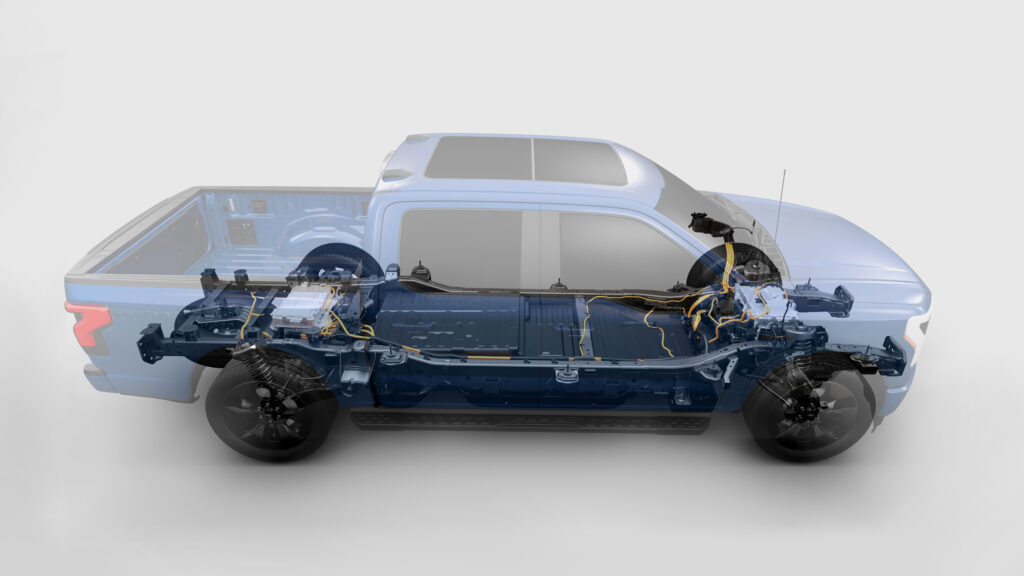
Most modern EVs are powered by highly-efficient, compact permanent magnet motors. Previously, the rare earth minerals needed to make permanent magnet motors were too expensive, but significant improvements in affordability and engineering have made this the gold standard for EV motors.
Plug-in hybrid vehicles (PHEVs) contain an electric motor and a gasoline-powered combustion engine. Most PHEVs can travel 20 to 30 miles on pure electricity before they begin to use the hybrid combustion engine for the remainder of the journey. PHEVs can be charged at a charging station, but they don’t require charging. However, PHEVs do contain far more mechanical components than a true EV, and therefore may eventually require more maintenance.
The PlugShare app is the go-to resource for electric vehicle owners when traveling. PlugShare’s map displays over 440,000 EV charging stations worldwide. The Trip Planning feature makes it quick and easy to plan out charging stops along any journey, and it’s fully customizable. This resource is especially useful when driving an EV into a rural area.
EV range is how many miles a vehicle can travel on a single charge, or remaining charge. Most electric vehicles are rated for somewhere between 250 and 350 miles of range on a full charge. In the United States, the EPA rates the official range based on a standardized driving course. Unlike internal combustion vehicles, EVs get better range in urban driving. For example, a Volkswagen ID.4 may get 230 miles on the highway at 70 mph, but nearly 300 miles of range when driving around town.
Electric vehicle range is always emphasized, but not at the fault of the car itself. Infrastructure is slow to catch up, and many parts of America remain charging deserts. Fortunately, public-private partnerships are coordinating the installation of a national charging network that will reach every corner of the United States by mid-decade. Charging in America will soon become much easier.
This is one of the superpowers of electric cars. Rather than letting all of the force applied by the brakes go to waste, EVs recapture some of the power through regenerative braking. How does regenerative braking work? When decelerating to slow down, the wheels drive the electric motor and convert kinetic energy from movement into potential energy to be stored in the battery pack. This is why EVs can actually gain significant driving range when cruising down a steep mountain. If a Tesla Model Y has 50% state of charge at the top of the mountain, it may have 55% by the time it reaches the valley below.
Solid-state batteries replace the liquid electrolyte found in other batteries with a solid electrolyte. The electrolyte is the part of the battery that is commonly known as battery acid. It conducts electricity between the cathode (negative terminal) and anode (positive terminal).
In essence, most of today’s batteries are ‘wet batteries.’ Solid-state batteries are ‘dry’, and with that comes many benefits, but also some new challenges. Affordability and the ability to withstand thousands of charging cycles remain the engineering challenges of solid state battery development. Several automakers are currently working on solid state development with hopes of producing EVs with much greater ranges and faster charging. Learn more about this technology at the CarEdge guide to solid state batteries.
How much charge is left in the battery? That’s the state of charge, usually displayed as a percentage. Some EV models display miles remaining by default, but most have the option for viewing the actual remaining battery percentage.

The Tesla Supercharger network is the largest charging network in the world, with over 30,000 chargers around the world. Version three (V3) superchargers supply up to 350 kilowatts of electricity to EVs, making it possible to charge up in as little as 20 minutes. The Tesla Supercharger network is only available to Tesla vehicles. Costs average around $0.28 per kilowatt-hour of electricity. Therefore, most Tesla cars will spend around $10 – $15 charging to full, gaining around 250 – 300 miles of range. Learn more about how much it costs to charge an electric car with our CarEdge guide to charging.
Tesla vehicles have a proprietary Tesla connector that accepts all voltage, so there’s no need to have a different connector specifically for DC fast charge. Only Tesla vehicles can use their DC fast chargers, called Superchargers. Be sure to check out the other plug types in the electric vehicle dictionary.
When an electric vehicle’s battery gets to a very low state of charge (often under 3%), the EV will have limited acceleration and even a limited top speed if the state of charge drops below 1%. It is important to avoid letting the battery drain this low often, as it can affect the long-term health of the battery.
All electric vehicle batteries contain a buffer, or unusable portion of the battery capacity. This is meant to preserve the longevity and health of the battery. Draining a battery entirely damages the internal components. Usable battery is the portion of the overall battery capacity that is accessible during normal operation. For example, the Ford Mustang Mach-E has a 98.8 kWh battery pack, but 91 kWh usable capacity. The rest serves as the buffer.
The latest generation of electric vehicles are capable of powering home electronics, charging other cars, and even powering an entire home. This feature is known as vehicle-to-load, or V2L. The Hyundai IONIQ 5 and Kia EV6 are both capable of vehicle-to-load transmission. It’s a great feature for avoiding the disruptions caused by utility power outages. You can even power an outdoor party (or campsite).
Think of voltage as the pressure from an electrical circuit’s power source that pushes electrical current through a wire, such as an EV charging cable. Amps multiplied by volts equals watts, which is the measurement used to determine the amount of energy. Most existing EV models are built with 400 V charging infrastructure, however newer models like the Hyundai IONIQ 5, Kia EV6 and Porsche Taycan use next generation 800 V architecture. The result is much faster charging.
There is a close relationship between watts, amps and volts. Amps multiplied by volts equals watts, which is the measurement used to determine the amount of energy. In the United States, the energy consumption of an electric vehicle is most often measured in watt-hours per mile, which is how much energy would need to be sustained for one hour for the vehicle to travel one mile. Highly efficient EVs average under 350 watt-hours per mile (Wh/mi).
Did we miss anything in our electric vehicle dictionary? Let us know in the comments!
Don’t forget to check out the new CarEdge Car Search, where you can find new and used vehicles listed for sale with unique industry insights that dealers don’t want you to see! You can even filter for electric vehicles. See the CarEdge electric car listings here.


Finally, the world knows why Ford has yet to name an electric vehicle the ‘Model e.’ On March 2, Ford announced the formation of a distinct unit for electric vehicle operations. The decision paves the way for the automaker to accelerate EV development while opening new avenues for direct-to-consumer sales. Ford says they are driven by the need to compete and win against both new EV competitors and established automakers.
3/3/22 Update: Ford CEO and President Jim Farley explained the move and how it affects dealers.
“This is only about creating incredible products that improve over time. To create a better customer experience than yesterday. And ultimately, to win as a company. The reality is, our legacy organization has been holding us back. We had to change.”
Ford wants a certain number of dealers to opt in to a new Model e sales model. Model e dealers would not hold inventory. Instead, they will facilitate the delivery of online orders, much as Tesla does for their customers. Electric vehicles will be sold at non-negotiable prices. That’s just one step away from direct-to-consumer sales.
“Our message to dealers is, we’re betting on you. Get ready to specialize,” Farley said.
Ford’s announcement outlines the establishment of two new operational divisions that will remain under the corporate umbrella of Ford Motor Company. Ford Model e will take on the future of electric vehicle development and sales. Ford Blue will become Ford’s combustion-powered division, encompassing everything from the F-150 to the Bronco.
The two new divisions within Ford will continue to collaborate and propel the greater Ford enterprise forward, according to the press release detailing the plans. Ford Model e and Ford Blue will join Ford Pro as the corporation continues to branch out its business model. In 2021, Ford Pro was launched as a one-stop shop for commercial and government customers.

The creation of Ford Model e was driven by the success of the popular Ford Mustang Mach-e and the overflowing support for the upcoming F-150 Lightning. Interestingly, Ford cited the success of their dedicated EV division in China as another source of inspiration for the launch of Ford Model e.
Ford President and CEO Jim Farley will take on yet another role as President of Model e. Farley has long been an outspoken proponent of Ford’s ambitious electrification plans.
“Ford Model e will be Ford’s center of innovation and growth, a team of the world’s best software, electrical and automotive talent turned loose to create truly incredible electric vehicles and digital experiences for new generations of Ford customers,” Farley said.
Ford hopes that Model e will attract and retain the best engineers and software developers to Ford. As autonomous driving and wireless over-the-air updates become the norm, Ford wants to be a leader in the reimagined automotive industry that’s currently in the making. A lot more computers, and a lot less oil. They’re pushing full steam ahead with ground-up development of electric vehicles. EV platform design, battery research and development, electric motors and inverters and charging infrastructure will all fall under the umbrella of Ford Model e. There are also plans to advance recycling infrastructure in both cost-cutting and environmentally responsible ways.
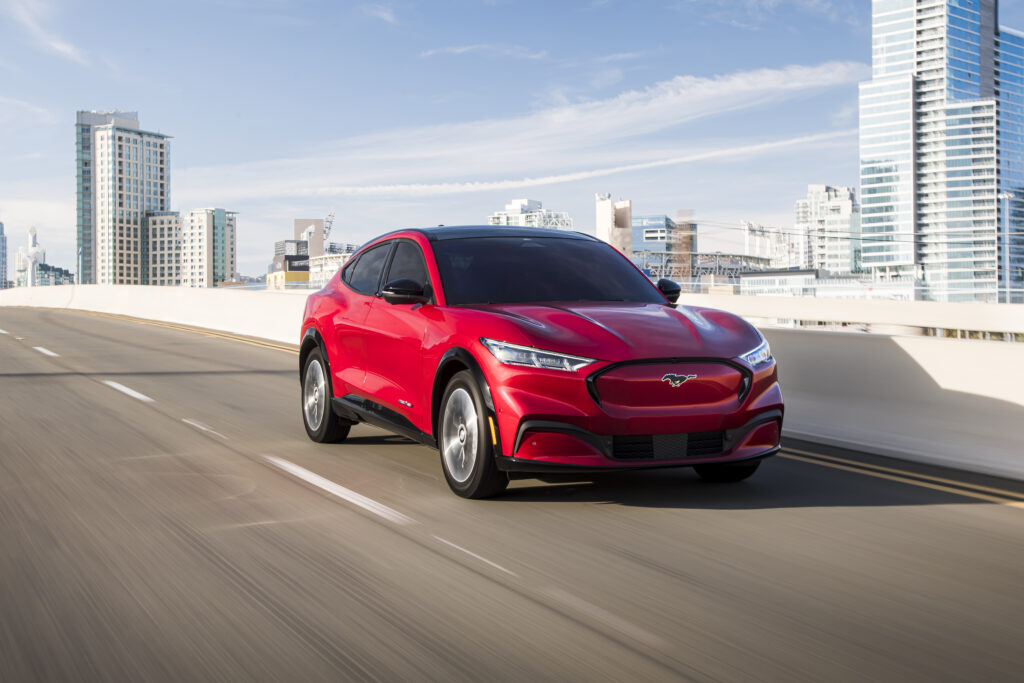
Ford not-so-subtly shared one of their larger ambitions for their new electric vehicle division: foregoing the dealership model. We’ve seen Ford’s corporate leadership speak out against outrageous dealer markups as the F-150 Lightning nears delivery. Ford’s announcement highlights the changes to their EV sales model:
“Ford Model e also will lead on creating an exciting new shopping, buying and ownership experience for its future electric vehicle customers that includes simple, intuitive e-commerce platforms, transparent pricing and personalized customer support from Ford ambassadors.”
Yeah, transparent pricing would be welcome. It’s great and almost shocking to see a legacy automaker making such a large pivot away from the status quo. Could the direct-to-consumer model win over new customers to the Ford brand?
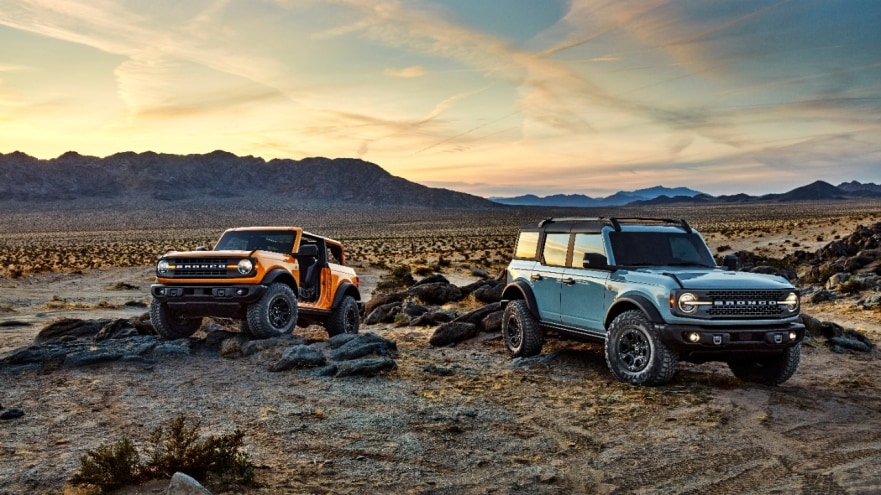
CEO Jim Farley calls the Ford+ plan the company’s biggest opportunity for growth and value creation since Henry Ford scaled production of the Model T. Ford Blue will work to optimize Ford’s combustion-powered models and profitability through strengthened consumer relationships, quality improvements and greater operational efficiency.
“Ford Blue’s mission is to deliver a more profitable and vibrant ICE business, strengthen our successful and iconic vehicle families and earn greater loyalty by delivering incredible service and experiences. It’s about harnessing a century of hardware mastery to help build the future. This team will be hellbent on delivering leading quality, attacking waste in every corner of the business, maximizing cash flow and optimizing our industrial footprint.”
Ford CEO Jim Farley has long said that Tesla needs to be taken seriously. Tesla, Rivian, Lucid and newcomer Fisker are all having success with direct-to-consumer sales. However, these automakers and any others who go this route face a maze of state laws that present roadblocks for direct-to-consumer sales. The dealership lobby is strong in much of the United States. So much so that a recent West Virginia bill was introduced that would ban most over-the-air updates in the state, all so that dealerships can continue to rake in service center revenue.
Other automakers are in the weeds with the dealership model, too. Kia’s much-lauded EV6 electric crossover is facing opposition from Kia dealerships. They’re simply not adapting to the coming rush of electric vehicles. Jalopnik reported that EV6 buyers are reaching out to them with stories of dealers who are making buying an EV6 a lot harder than it should be.
Nationwide, 17 states currently have a ban on direct-to-consumer sales. Eleven more states have carved out specific exceptions for Tesla (and in some cases, other automakers that sell only EVs). That’s why Tesla technically can’t sell directly to consumers in states like Texas and Washington. It’s an antiquated system in need of change.
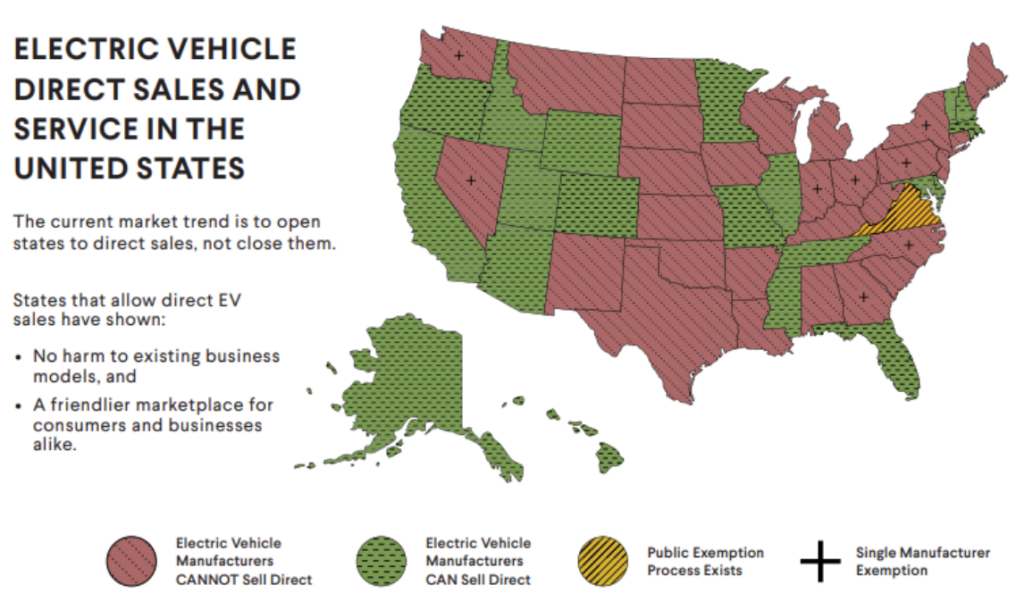
Ford recognizes the tides of change approaching automotive sales. Automotive News reported that efforts to permit direct-to-consumer sales have been introduced in 10 states. Several of the bills already failed. More are surely to come as electric vehicle market share surpasses 5% of new auto sales in America.
This is long overdue. Consumers are fed up with dealer markups, deceptive sales tactics and stressful experiences at the dealership. But this isn’t the end for dealerships. There will be a need for dealers for decades to come, even if sales shift away from their franchises.
Electric vehicles are coming, like it or not. Ford is aiming for annual production of more than 2 million EVs by 2026. They expect EVs to represent half of global volume by 2030. Automakers say that half a trillion dollars will go to electric vehicle development this decade. However, EVs currently can’t be serviced at the neighborhood repair shop, or in one’s home garage. Certified technicians certified in electric vehicle repair are quickly going to be in high demand at service centers everywhere. Dealership service centers aren’t going away. In fact, dealership service centers will likely see business grow as more consumers opt for electric vehicles.
Ford’s new Model e and Ford Blue divisions present a massive opportunity for new revenue streams and efficiency within Ford’s R&D and sales operations. Will other legacy automakers follow suit? Truthfully, they are very likely making plans as we speak. CarEdge will keep you up to date with consumer-focused automotive news. More change is surely to come.
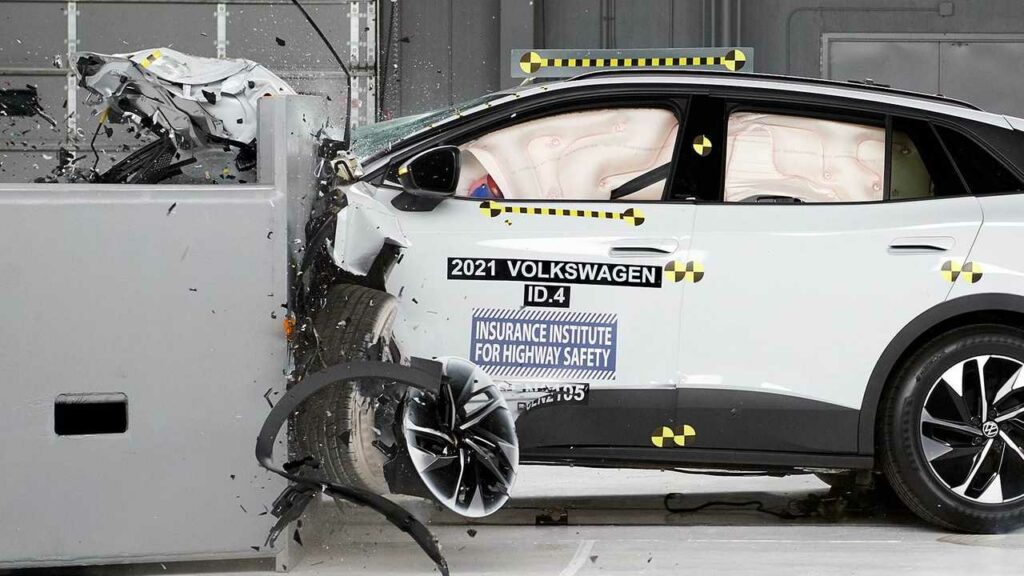
Update 3/8/22: As the Ukraine crisis continues, automakers continue to see impacts. The possibility of a looming raw material shortages is beginning to weigh on semiconductor chip production forecasts, with the real possibility of an even worse chip shortage on the horizon. Metals used in everything from vehicle frames to catalytic converters are soaring to record prices due to the importance of Russia in the global supply. More on the latest developments below.
The ongoing crisis in Eastern Europe is affecting global automakers more than expected. As the conflict drags on into March, automotive suppliers in Russia and Ukraine are experiencing severe disruptions. Logistical nightmares are tumbling out of control as airspace restrictions are enforced. Now, cyberattacks are adding insult to injury. Here’s every automaker impacted by the conflict in Ukraine.
Transport between Europe and countries home to Asian auto manufacturers is facing unprecedented disruption as air space restrictions over Eastern Europe halt 20% of the world’s air cargo. In retaliation to bans imposed on Russia, Russia has reciprocated by banning European carriers from entering Russian airspace, which stretches 5,600 miles from Europe to East Asia. There have also been reports of Russian-based cargo ships being refused refueling at various ports in protest to the invasion of Ukraine.
Furthermore, automotive parts manufacturers located in Ukraine are shuttered, and those in Russia are subject to the effects of sanctions.
Raw materials used in the manufacturing of vehicle frames and electric vehicle batteries are soaring to record highs. Aluminum, palladium, platinum and nickel are most immediately impacted by the Ukraine-Russia conflict. About 40% of the world’s palladium is sourced from Russia. Palladium is used in catalytic converter production. Automotive News reports that auto industry suppliers are well aware of the impending impacts on manufacturing.
“When it comes to metals, Russia companies are major suppliers to Germany. In 2020, they accounted for 44 percent of Germany’s nickel imports, 41 percent of its titanium, a third of its iron, and 18 percent of its palladium.
With production of 108 million tons last year, Russia is the world’s fifth-largest producer of iron ore, according to Credit Suisse, supplying European steelmakers who now face higher prices and possible difficulties procuring the metal.”
Palladium now sits at $3,440 an ounce, 60% above where it was two months ago. Automotive-grade aluminum also hit a record high on March 7. Nickel is at a 15-year high.
Neptune Global chief executive Chris Blasi said that someone will bear the brunt of the record prices and shortage. “There is no other option beyond palladium and platinum for catalytic converters, and you cannot build a car without a catalytic converter,” Blasi said.
Around 70% of the neon used by automotive industry suppliers is sourced from raw materials in Ukraine. Neon is used in the lasers that are critical to the production of semiconductor chips. The ongoing chip shortage may become even worse if the Russia conflict extends beyond a few months. For now, chip makers are relying on existing supplies. Automotive News detailed the neon supply concerns to keep an eye on here.
Although many policy and conflict experts expected worse by now, cyberattacks have disrupted automakers in the past week, causing some plants to briefly close. The automakers themselves are not the only ones at risk. Suppliers critical to the vast automotive supply chain have been hit with cyberattacks, and the result has been felt in recent days.
Volkswagen Group, the parent company of Audi, sources a large portion of its wire harnesses from a Ukrainian supplier. Audi announced production cuts that result from these supply chain difficulties. VW Group brands are among the many who have stopped exports to the Russian market.
The critical wire harnesses that BMW uses for its vehicle production are sourced from suppliers in Western Ukraine. The closure of the suppliers and the associated supply chain bottlenecks have now caused production cuts at BMW’s German plants. BMW also halted production at a factory in Kaliningrad, a Russian exclave situated between Poland and Lithuania. BMW has also suspended vehicle exports to the country.
On March 2, Ford announced a production stop at the Ford Sollers production facility, in which it maintains a 50% stake in partnership with Russian automaker Sollers.
Ford has a 50% stake in three Russian automotive plants. Ford Sollers is the Russian joint venture between Sollers of Russia and Ford. Most of the production at Ford Sollers is for the Ford Transit and similar commercial vehicles. A company spokesperson said that employee safety is their priority, and that effects of sanctions and supply chain disruptions are being assessed.
GM says they are fortunate to have limited supply chain risks as a result of the Ukraine conflict. Still, they are stopping exports to Russia. The move is unlikely to have major impacts for GM, as they sell less than 3,000 vehicles in Russia annually. GM ended production in Russia seven years ago.
On March 2, Honda joined other automakers in pausing sales and exports to Russia. Volvo was the first to make the move.
Interfax News reported that a Russian Hyundai official announced the suspension of output at its plant in St. Petersburg. On March 4, the automaker cited supply issues in its decision to prolong the plant closure. Hyundai is a major force in Russia, selling over 10,000 vehicles per month on average (12% market share).
The UK automaker announced that it is ceasing shipments of vehicles to Russia, effective immediately. Last year, Jaguar Land Rover sold 6,900 vehicles in Russia. A spokesperson said Jaguar Land Rover’s priority was “the wellbeing of our entire workforce and their families, as well as those within our extended network”. The statement went on to cite global supply chains and sanctions. “The current global context also presents us with trading challenges, so we are pausing the delivery of vehicles into the Russian market and continually monitoring the situation on behalf of our global customer base.”
Global auto manufacturer Magna announced the closure of its six Russian plants on March 7, citing “the unfortunate situation in Ukraine.” Magna Spokeswoman Tracy Fuerst shared the company’s support for the Ukrainian people. “Although we don’t have facilities in Ukraine, we have the privilege of working with thousands of Ukrainian colleagues in our Magna operations around the world as well as those from Russia who share the same values of human rights, diversity and inclusion,” Fuerst said. The Canada-based automotive supplier builds parts and entire vehicles for brands ranging from Toyota to Mercedes-Benz.
Mercedes-Benz sources multiple components from suppliers in Ukraine. Mercedes-Benz will reduce production at some European plants this week due to supply shortages. Mercedes sources many components from suppliers in Ukraine. Production shifts will see cuts, but the automaker does not expect to fully stop production outside of Russia. Mercedes is halting production at its Russian plant and pausing the export of passenger cars and vans to the country. They cite sanctions as the cause of the move.
Following Volvo’s lead, Mitsubishi announced that it will halt production and sales of their vehicles in Russia, effective March 1st. Mitsubishi has 2.2% market share in Russia.
Stellantis established a task force to identify disruptions from the ongoing conflict. Stellantis CEO Carlos Tavares said that the automaker has 71 employees in Ukraine. They are ensuring compliance with the rapidly-evolving sanctions in place.
Stellantis, the result of a merger between Fiat Chrysler and Peugeot, produces and sells the Peugeot, Citroёn, Opel, Jeep, Fiat brands in Russia. In January, Stellantis announced that they will begin exporting Russian-made commercial vehicles to Western Europe. The latest developments will likely put a hold on their plans. In 2021, Stellantis brands had just 1% market share in Russia.
On March 2, Toyota announced an indefinite pause in production at its Russian factory. Toyota produces about 80,000 vehicles at its St. Petersburg plant. They are also pausing imports into Russia.
All 14 domestic factories were closed on February 28 after critical supplier Kojima was taken down by a cyberattack that included a threatening message. The supplier was hit with a virus soon after Japan’s government announced support for Ukraine.
Toyota announced that it would resume production at all facilities in Japan the following day. Kojima was unable to operate, and Toyota said they do not stockpile the parts made by the supplier. Toyota relies on 60,000 suppliers, an immense vulnerability that Toyota is surely rethinking.
Volkswagen Group, which includes Audi, Bentley, Cupra, Porsche, Lamborghini, Skoda, SEAT and Volkswagen, continues to face supply chain constraints. VW branded vehicles are produced using wire harnesses sourced in Ukraine. As reserve supplies run low, more production cuts are possible. Production of Volkswagen’s electric vehicles is halted because of supply chain disruptions. The Volkswagen ID.4, ID.3 and new ID.5 electric vehicles are especially affected.
On Thursday March 3, Volkswagen said it is suspending its Russian business until further notice. No cars from VW Group brands will be exported to Russia. VW delivered 216,000 cars in Russia in 2021, about 2.4% of Volkswagen Group’s global vehicle sales.
As supply chain vulnerabilities surface, VW says it will idle the massive Wolfsburg plant. The VW Zwickau and Dresden plants are also closed for the week. Prior to the Ukraine-Russia disruptions, there was already a 6-12 month wait for buyers ordering a Volkswagen ID.4 in North America.
On February 28, Volvo became the first automaker to cease shipments of new vehicles to Russia. The Swedish automaker (owned by Geeley of China) cited their desire to avoid possible conflicts with the rapidly changing sanctions being imposed on Russia by the European Union, United States, and allies. Volvo sold 9,000 cars in Russia in 2021.
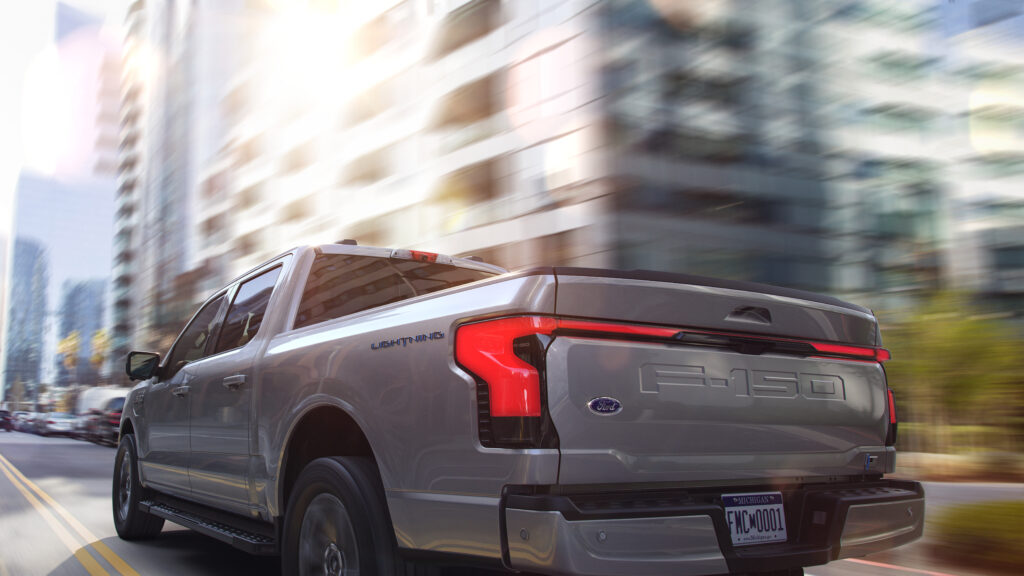
The Russia-Ukraine conflict adds a new dimension to the production delays and supply chain disruptions that have been dragging on for well over a year. The latest chip shortage forecasts show a delayed recovery, despite earlier optimism. So far in 2022, AutoForecast Solutions has increased their projection of vehicles lost in production due to the chip shortage by 63%, from 767,700 to 1,253,100.
Severe sanctions on Russia and instability in Ukraine may persist far longer than originally expected. Now that cyber security vulnerabilities are being targeted, sporadic production halts are becoming the new normal. Automakers impacted by the Ukraine conflict are in for prolonged uncertainty. Automakers may be entering a period of disruption being the new normal, even as the chip shortage will eventually wind down.